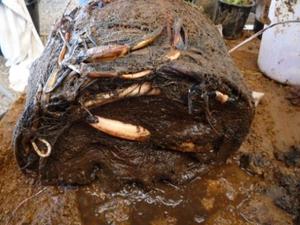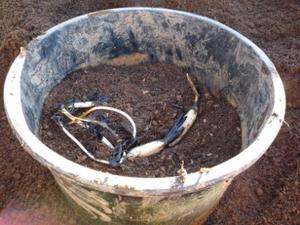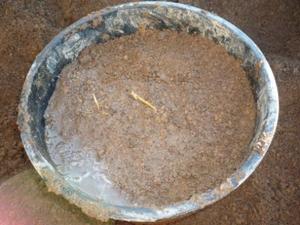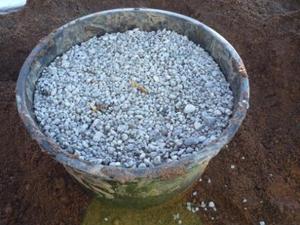Lotus
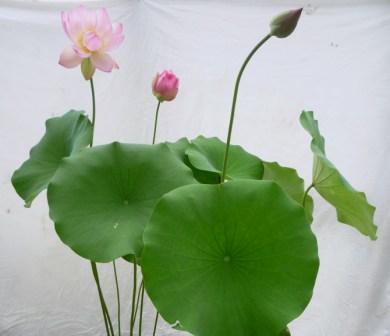
Lotus
The lotus plant is a symbol of spiritual perfection for many far eastern populations. Growth is only limited to the climate and pond or container it is grown in. The plant is a series of tubers and runners that prefer a full sun bog environment to reach its growing potential. Lotus are best contained in pots that prevent the tubers from escaping. If left unchecked the lotus plant will overtake a pond, and crowd out water lilies and aquatic plants. Lotus do not have to be limited to your garden, containerised Lotus will also do well indoors in a sunny environment or on a warm patio.
In ideal conditions the plant will grow to around 1.5 metres (5 feet) in height with leaf diameter reaching 60 cms (2 feet) across.
Lotus are slow to come out of dormancy with leaf growth depending on the warmth of the soil or pond it is growing in. Flowering is usually in the warmer months (unless kept in a glass house) from November but with
The less wind the better with a north facing aspect allowing the maximum amount of full sun in the day.
The Lotus prefer warm, humid temperatures and they must remain as even as possible, wide fluctuations can delay flowering and growth.
Lotus need to be divided every few years so you must choose a container that the plant can be easily removed from.
Basic Guide to Growing Lotus
To start choose solid round containers for the lotuses so future runners don't get jammed in square corners. The water lily baskets are not suitable for Lotus plants as the holes in the baskets allow the Lotus runners to expand outside the basket.
Lotuses prefer a soft soil so that runners can freely spread. We sell our own blend of Aquatic soil that is versatile for Lotus, water lily and aquatic plants. The clay loam soil is lump free and blended with sand for excellent results. AVOID potting mixes and soil with peat, pumice, compost which contain light materials that will float away. Also make sure the soil does not contain any extra nutrients, osmocote or fertilisers as they leach into the water and will stimulate algae.
Lotus are gross feeders and need to be fertilised regularly during the growing season with Aquatic plant food designed for aquatic plants. Glenbogal Aquatic recommends Glenbogal Aquatic Spikes or Glenbogal Aquatic Tablets (See Tablet Fertilisers in this web-site).
Lotuses can be grown in the main pond, a separate small pond, or self contained in decorative pots for the patio or deck. Water over the pot or soil in the container should be at least 5cm deep – the deeper the container the cooler the water and this can restrict the results from your Lotus. If growing in the pond, be sure that runners do not escape the container and invade the pond. They can overwhelm other pond plants.
With some varieties, it can take several years for them to bloom, and this can also be dependent on your location.
For best results from your Lotus plant or place your pond or self contained pot in a wind free environment in full sun. Heat provides get stimulation in foliage and blooms.
Re-potting your lotus tubers
Re-potting should be only done just prior to Spring (July is preferable) so to reduce any damage to the tubers. Be prepared! this is a cold wet job and you will get really dirty!
Your tubers should be firm and have a healthy growing tip. Be very careful not to damage the tips as they are quite fragile and critical to growing the plant. Any damage will cause water to seep into the tuber causing fungus, rotting and the tuber to die.
Fill your container 1/4 full with Low nutrient Aquatic soil then add on top and additional 1/4 of a container high nutrient top soil (Compost or potting mix is not suggested as the excess nutrient could cause algae). Cover this soil with a thick layer of Aquatic soil. This layer of Aquatic soil will stop the nutrient leeching into the pond.
Place your lotus tuber on top of the soil with the growing tip at soil level and pointed toward the centre of the pot.
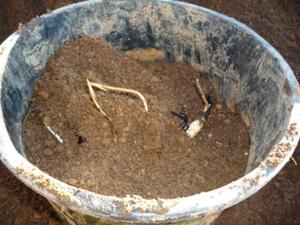
Cover with soil allowing the tip to be visible
Then lightly cover with small stones. (Stones over top stop fish from burrowing into the soil and loosening the planted tuber).
Place in shallow water with a water coverageover the lip of the tub of around 5cm. A full sun position is preferable with wind protection.
Once the leaves appear you can move the container to a deeper of the pond but be aware the lower the plant goes the cooler the water temperature.
The roots will pull the tuber to the bottom of the container or pond.
Please be aware that if you wish to trim off old leaves do not cut off below the water level. The leaf stems are hollow and if water enters these stems the viability of the tuber may be compromised.
If your Lotus is containerised make sure that you keep the water level topped up and that the soil is kept covered and moist.
As Lotus are gross nutrient feeders regular feeding is required.
To get the best from our Lotus plants we add Glenbogal Aquatic season long (6-9 months) spikes to the tubs. Feed after the leaves start shooting. Over the warmest part of summer (January/February) when the plant is growing the quickest top up with fertiliser spike. If you lotus leaves are yellowing this is a sign they need more food.
NOTE: Your first year of growth may not produce any flowers but the foliage (if the plant is well fed) is spectacular.

